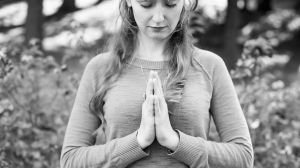“Life (Ayu) is the combination (samyoga) of body, senses, mind and reincarnating soul. Ayurveda is the most sacred science of life, beneficial to humans both in this world and the world beyond.” -Charaka Samhita, Sutrasthana, I.42 -34
I was walking home from the Bart train station at 8:40pm, when I thought to myself: How did I do everything I did today, and I still have a 20 minute walk ahead of me? I started my day with my yoga practice, a morning appointment, taught three classes in the afternoon and evening, commuted on two trains, took two uber car rides and one bus. I also made time for breakfast and some small snacks along the way. I find a lot of us live the life of “checking off lists” and existing in “overdrive” or “overload.” So how can we make the time to be present with ourselves and others? How can we allow ourselves to be so “alive” that we seize the juiciness of every moment and live in wholeness with our mind, body, spirit? Doctors say chronic activation of stress response damages our system, causing high blood pressure and flows of stress hormones that continue throughout the day. Hence, why a lot of us don’t feel good, have a hard time sifting through emotions, or can’t find our zest for life. I believe if we help ourselves come into our own unique harmony, we can heal the world one person at a time. So, how can we learn to remove obstacles present in our daily lives, cultivate inner harmony, and harness healing power? One way is Ayurveda!
Ayurveda is the ancient science of self-healing, also known as “the Science of Life”. Yoga and Ayurveda are sister sciences that came together to bring natural balance to the mind, body and spirit over 5,000+ years ago in India. It is considered one the most remarkable holistic practices in healthcare. Ayurveda allows the knowledge and skill to create a specific dosha balancing yoga practice. It enables us to use food with awareness, and create a basic lifestyle plan.
Through the practice of Ayurveda and yoga we can empower ourselves in self-realization and self-healing by learning how to apply daily care to our own constitution and dosha. In Ayurveda it is believed we are derived from energy, light and matter. These three powers make up the three elements of the dosha’s: Kapha (earth/water), Pitta (fire), Vata (air). We each have unique portions of each dosha within our constitution. It is how we each manifest our prakriti or nature in the living world. Working with our doshas, we help heal and harmonize ourselves. The doshas are also marked as part of our seasons and times of year in Vedic knowledge.
At this time, we are living in the season of Fall which in Ayurveda is also known as Vata season. Vata dosha and season is predominately an energetic, active, creative frame of mind, always on the go energy. When Vata is out of balance we experience anxiety, fear of the future or what’s going to happen and we tend hold our breath. Not letting the Prana (breath/spirit) flow easily we jeopardize our life force. I believe because we all live in such a fast paced culture, we all experience Vata disorder, even year round. Because it is Fall, and most of us are experiencing fast movement and anxious minds with the election and holiday’s arriving, I want to offer you some Vata calming support. Creating grounded spaciousness allows us to breathe and touch our own inner self. With a few easy to do Restorative yoga poses you can rest the anxious Vata and feel lighter, more stable and peaceful. These two simple versions of Savasana definitely help me in my journey to stabilize my Vata dosha.
“Yoga and knowledge are the two methods for dissolving the disturbances of the mind. Yoga is control of the movements of the mind. Knowledge is clear observation of the them.” -Laghu Yoga Vasishta V.9.72


Genevieve is committed to serving and helping others come into their wholeness. She is a compassionate teacher that invites all her students to live their truth and celebrate who they are as they are. She is a passionate Reiki Master/Teacher. Genevieve teaches Restorative Yoga with Reiki at Laughing Lotus on Friday from 6:45-8:00pm and Sunday from 6:15-7:30. Her website is InLightandSoul.com.


